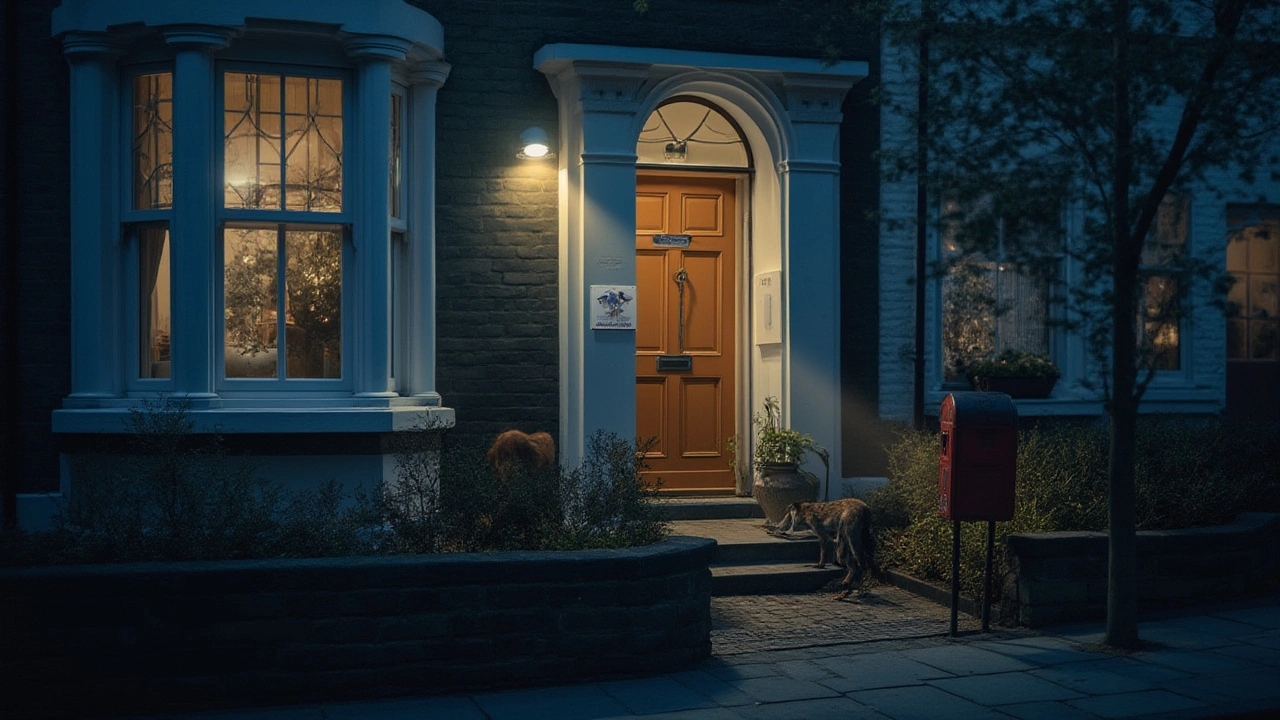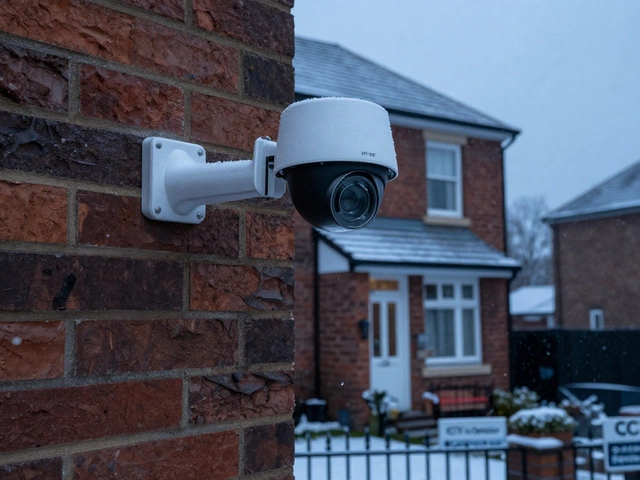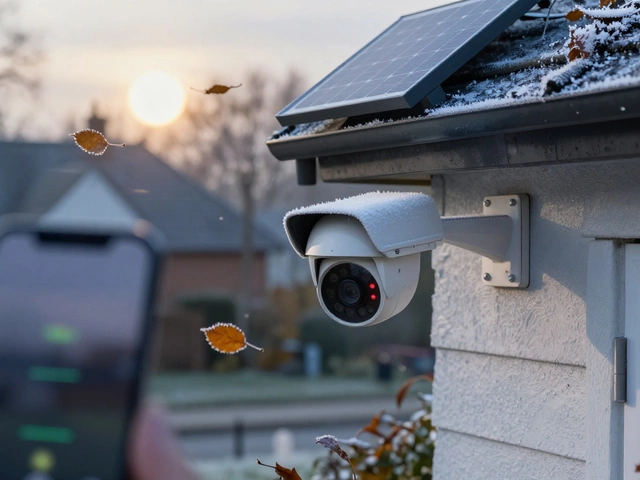If you think motion sensors are just for James Bond movies, think again. Your home likely relies on some humble little sensor to keep your place safe, let your porch lights know when to surprise you, or even keep your pets from triggering the alarm at 2AM. But which motion sensor actually works best? Honestly, the answer isn’t as obvious as you’d think, and most people settle for whatever came with their alarm package. The truth is, the “best” motion sensor depends on your needs, layout, and yes—how much your dog weighs.
Understanding the Different Types of Motion Sensors
Before you can pick the best sensor, you need to know what you’re actually dealing with. The three big ones are Passive Infrared (PIR), Microwave, and Dual-Technology sensors. It’s wild how these tiny gadgets work so differently under the hood, yet they all just want to let you know when something moves in their line of sight.
PIR sensors are by far the most common. They spot warm bodies moving across their view by picking up on temperature changes. So when a person—or a large pet—walks by, the sensor catches that difference, and triggers a response. PIRs are reliable and inexpensive, which is why pretty much every motion-activated home light or alarm uses them as default. They’re also easy to install, and they don’t get triggered by moving shadows or lighting changes. But they do have limitations: glass windows can block them, and sometimes they won’t catch you if you’re moving very slowly or at a weird angle. Honestly, if your main enemy is the neighbor’s cat, a PIR sensor probably won’t even notice it. But, if the enemy is a person sneaking by, it’s a solid bet.
Then there’s the microwave sensor. This one works more like radar: it sends out microwaves (totally safe ones, by the way) and looks for reflections. When something moves inside the detection area, the reflected waves change. Microwave sensors have a huge range and can “see” through glass walls, thin doors, and partitions—something PIRs struggle with. But, they’re not perfect. They’re more expensive, they can be triggered by things like moving cars outside, or even heavy rain if positioned poorly. You don’t want your alarm going off just because of a storm, right? Also, microwaves can trigger on things as small as a blowing curtain or even ripples from your air conditioner. So, they require careful placement and tuning.
If you want the best of both worlds, you get a Dual-Technology motion sensor. Picture this: a motion needs to trip both the PIR and the microwave at the same time before it’ll set off an alarm. Odds of both triggering over something like a flickering light or a pet? Pretty low. Dual-tech sensors are brilliant if you want fewer false alarms. But because they combine two techs, these are more expensive, they need slightly more power, and install requires a bit more brainpower (or a good installer). For places where security really, really matters—like a jewelry shop or your home office with all your precious gaming gear—this is the go-to.
There are other quirky options out there, like ultrasonic sensors. Those work using high-frequency sound waves, but they’re rare for homes, mostly popping up in commercial spaces because they’re sensitive and can be affected by something as simple as air turbulence or a barking dog. Some smart home sensors now bundle cameras, temperature, or light detection for extra features—but at their core, most still depend on PIR, microwave, or both.
So, quick summary: PIR is cheap and reliable for inside spaces, microwave works best for big, open, or glass-heavy spots, and dual-technology is ideal when you just want less hassle with false alarms. Now, the tricky part is matching the tech to your house and lifestyle.
Which Motion Sensor Works Best for Your Home?
Choosing the best motion sensor isn’t one-size-fits-all. Think about your own home for a moment: Are you working with lots of glass doors or windows? Got pets or kids who love to wander? Want to protect a detached garage or shed out back? Each scenario changes what you need.
If you live in a typical suburban home with a lot of foot traffic and a mischievous dog sniffing around, stick to PIR sensors designed to be “pet immune.” The best pet-immune PIR sensors can ignore animals up to 80 pounds. That’s great if you have a golden retriever but not so much if you have a Saint Bernard. Look for models that mention adjustable sensitivity—you might need to tweak settings depending on just how curious your four-legged friend is.
Now, if your home has a bunch of big windows or you want to keep watch over a sunroom or covered porch, microwave sensors start to look more appealing. Remember, microwave sensors don’t care much about obstructions like glass or thin walls—they just keep sweeping until something bounces the microwave back differently. That’s perfect for modern houses with open-plan designs, lots of light, or “bonus rooms” made of more glass than wall. Glass break? No problem there.
But let’s say your top priority is stopping false alarms and you’re tired of sprinting downstairs in your pajamas at 3AM when a moth triggers your alarm again. In that case, dual-technology motion sensors are a headache-saver. With these, there’s almost no chance a harmless event will set things off, because both technologies have to agree that there’s something moving and warm in the room. That combo is what makes dual-tech sensors popular for businesses and high-security homes. Dual-tech also helps when weather is unpredictable, since you’re not getting pinged for every bit of wind or sunshine.
Also think about wiring. Old-school PIR and microwave sensors might need hardwiring. If you’re retrofitting, you can go with battery-powered wireless models that last for years. Smart home folks love these since you can position or move them easily without hiring an electrician every time you redecorate.
Placement is everything. An interesting fact: over 30% of motion sensor false alarms are caused by bad placement. Direct the sensor so it faces entryways, hallways, or the bottom of stairs—places people have to walk through. Avoid pointing them at windows where sunlight can heat up random objects (yes, even the neighbor’s shiny car hood outside). And never install sensors near vents, fans, or radiators. Hot or cold air blowing across the sensor will make it think your house is haunted. Mounting height also matters. Most manufacturers recommend 6 to 8 feet up on the wall, angled slightly down. That gets the best detection range without picking up every bug or pet scurrying by below. It’s a little like Goldilocks: not too high, not too low, just right.

Insider Tips for Installing and Fine-Tuning Your Motion Sensor System
Getting this right from the get-go saves you loads of headaches down the line. Don't just slap your motion sensor anywhere you spot an empty patch of wall. First, sketch a quick map of your home’s floor plan. Mark your main entries, windows, stairs, and big furniture that could block a sensor’s line of sight. Now walk through your house like a stranger: where would YOU sneak in?
The pro tip? Place sensors where intruders are forced to pass if they want to get deeper into your house—not where they could easily bypass. For instance, a ground floor hallway between the front entry and living room is gold. Mudrooms, garages, and basements can also be popular break-in points, but remember, not all sensors handle damp spaces well. PIR sensors work best in climate-controlled areas; microwaves don’t mind the temperature swings as much.
Another overlooked spot: second-story decks or balconies. Experienced burglars know most folks don't bother with security there. Slap a sensor overlooking patio doors, and you’re a step ahead.
When it comes to pets, test your sensor before you trust it. Let your dog or cat roam through the area while your alarm is on “test” mode. Some high-end PIR sensors have “crawl detection,” which spots someone trying to sneak in low, but most pets don’t trip them unless they leap. Watch and see if your pet manages to set the thing off. If so, raise the sensor a bit or aim it further from the floor. For homes with cats (those loveable troublemakers), consider dual-tech, since pawing at curtains or jumping onto furniture can sometimes imitate the body heat signature of a human.
Modern motion sensors often have settings panels with dip switches or software controls. Play with the sensitivity until you get the “sweet spot”: catches humans, ignores animals and random heat. Some brands let you mask off (disable) parts of the detection zone—super useful for avoiding constant triggers from a fish tank heater, for example.
Testing is key. Half the folks who complain their system doesn't work right never actually ran a live test. Walk across the room, and try different speeds. Can you shuffle sideways without it noticing? If so, reposition the sensor. If your area gets hot summers, re-test when temperatures rise—it's possible your PIR might miss things if the background temp creeps up close to body heat.
Battery die-offs are another tripwire. Set reminders—put a note in your phone to swap out batteries every year or so. Some smart sensors warn you when they're low, but the classic ones? Zero sympathy. No juice, no protection.
Have Alexa, Google Home, or Apple HomeKit? Plenty of new motion sensors plug straight in. It’s easy to set custom routines, like turning on specific lights if the sensor goes off after sunset, or sending alerts only when you’re not at home. This flexibility makes a huge difference, especially for night owls or families with shifting schedules.
Future-Proofing: What’s Around the Corner for Motion Sensors?
If you think motion sensors are just going to stay the same old black boxes, the next couple of years are set to surprise you. Big tech companies are already stacking other sensors—like humidity, light, and even air quality—into single motion detection units. Some top-end models use LiDAR, the same tech as self-driving cars, for centimeter-level accuracy. Others use AI algorithms that recognize the difference between your teenager sneaking to the fridge and your dog bouncing off the sofa. In 2025, several companies (like Aqara and Eve) launched motion sensors that can even map movement patterns over days, so you can spot activity trends. It’s not just about “is someone there”—it’s about who, when, how long, and how often.
Energy efficiency is another big leap. The new wave of sensors sips battery instead of guzzling. Look for models now promising 4-5 years on a single AA or AAA. There are even models with small solar cells for tricky outdoor spots. App integration is also standard now: real-time phone alerts, video pop-up, instant home automation triggers—all with minimal fuss. The user interfaces on these companion apps are getting slicker, with options for temporary privacy modes, guest alerts, or even “pet vacation mode” that dials back sensitivity when you’re boarding your dog.
One weird but nifty trend: sensors that use heat signatures to estimate how many people are in a room without needing cameras. Imagine the impact on smart energy-saving—like adjusting AC or heating only when someone’s present, or alerting parents if kids leave their bedroom windows open. Some smart home builders are exploring motion detection tied into window and door sensors that create a “map” of movement through the home, with real-time overlays.
Security is tighter too. The best new sensors use encrypted wireless signals, so you’re not opening the door for hackers by going smart. It’s worth checking if your chosen model offers end-to-end encryption or “tamper detection,” which pings an alert if someone tries to disable or remove the device.
Costs have leveled out: you can now find a top-notch dual-technology motion sensor for less than $60, and reliable PIR-only models commonly slide in under $20. Even some big-brand microwave sensors aren’t outrageously pricey anymore. For most homeowners, a mix works great: PIR units in most rooms, maybe a dual-tech in your highest-risk zone, and a microwave for those tricky glass-heavy or outdoor spots.
So what’s the best type? If you crave simplicity and budget matters, stick with a quality PIR. For glass-laden or weird open-plan areas, try microwave. When you can’t stand another false alarm—or want to look like you’re running security for the Batcave—spring for dual-technology, best motion sensor option for the toughest jobs. The smartest investment? Match the sensor to your reality, not the manufacturer’s blurb.






